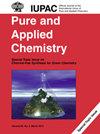奥斯塔河谷牛种的牛奶蛋白多态性
IF 2
4区 化学
Q3 CHEMISTRY, MULTIDISCIPLINARY
引用次数: 0
摘要
牛奶蛋白质是由高度多态的基因编码的,这些基因具有多种变异,从而产生不同的等位基因变体。每种等位基因变体对奶酪的制作特性和人体健康都有不同的影响。β-酪蛋白 A1-A3-I-B、k-酪蛋白 B 和 β-乳球蛋白 B 可通过增加奶酪或牛奶产量、改变化学参数、具有较小的酪蛋白胶束尺寸以及影响凝乳酶凝结时间(RCT)和凝乳固化率(CFR)来影响牛奶奶酪的制作特性。此外,β-酪蛋白 A1-B 还被认为是导致缺血性心脏病(IHD)、1 型糖尿病(T1D)、谷胱甘肽(GSH)浓度降低和牛奶不耐受等不同健康疾病的危险因素。我们首次采用 LC-MS 方法分析了奥斯塔河谷自交系牛种的主要牛奶蛋白质基因变异。对从 IAR 实验牧场或奥斯塔河谷地区奶牛生产者的牛群中采集的三个牛种(红皮牛 - VRP、黑皮牛 - VNP 和栗牛 - CAS)的牛奶进行的分析表明,β-酪蛋白 A2 和 A3/I 的频率相当高,而 β-酪蛋白 A1 的频率较低。此外,在 VRP 品种中,β-酪蛋白 B 的频率较低,而在 CAS 和 VNP 品种中,该变体的频率较高。就 k-酪蛋白而言,等位基因变异 B 在 VRP 中最常见,而等位基因变异 A 则在 VNP 和 CAS 品种中最常见。结果表明,奥斯塔河谷牛奶具有良好的奶酪制作特性和较高的β-酪蛋白 A2 频率,这可能与对人类健康的有益影响有关。鉴于这些结果,重要的是要制定考虑到牛奶蛋白质多态性的育种计划,以进一步提高牛奶对奶酪制作工艺的适用性,并减少饮用牛奶中可能成为人类健康风险因素的 β-酪蛋白 A1 和 B 的存在。本文章由计算机程序翻译,如有差异,请以英文原文为准。
Milk protein polymorphisms of Aosta Valley cattle breeds
Cow’s milk proteins are encoded by highly polymorphic genes characterized by several mutations which result in different allelic variants. Each allelic variant has different possible effects on cheese-making properties and on human health. β-casein A1-A3-I-B, k-casein B and β-lactoglobulin B are supposed to influence milk cheese-making properties by increasing cheese or milk yield, by varying chemical parameters, by having small casein micelle size, and by influencing rennet coagulation time (RCT) and curd-firming rate (CFR). In addition, β-casein A1-B are also considered to be a risk factor for different health diseases such as ischemic heart disease (IHD), type 1 diabetes (T1D), decreased glutathione (GSH) concentration, and milk intolerance. An LC-MS method was applied to profile, for the first time, the main milk proteins genetic variants from Aosta Valley autochtonous cattle breeds. Analyses performed on milk collected from bovines of three cattle breeds (Red Pied – VRP, Black Pied – VNP and Chestnut – CAS), either from IAR experimental farm or from herds of dairy-producers in Aosta Valley region, showed quite high frequencies of β-casein A2 and A3/I, and low frequencies of β-casein A1. Moreover, low frequencies of β-casein B in VRP breed and high frequencies of the same variant in CAS, and VNP breeds have been found. As far as k-casein is concerned allelic variant B is the most diffused in VRP while allelic variant A in VNP and CAS breeds. Finally, β-lactoglobulin most diffused allelic variant for all breeds is B. Results suggest that Aosta Valley milk has good cheese-making properties and good frequencies of β-casein A2 which may be related to beneficial effects on human health. In light of these results, it is important to develop breeding programs which take into consideration milk proteins polymorphisms to further increase the milk suitability for cheese-making process and to decrease the presence of β-casein A1 and B in drinking milk which can be a risk factor for human health.
求助全文
通过发布文献求助,成功后即可免费获取论文全文。
去求助
来源期刊

Pure and Applied Chemistry
化学-化学综合
CiteScore
4.00
自引率
0.00%
发文量
60
审稿时长
3-8 weeks
期刊介绍:
Pure and Applied Chemistry is the official monthly Journal of IUPAC, with responsibility for publishing works arising from those international scientific events and projects that are sponsored and undertaken by the Union. The policy is to publish highly topical and credible works at the forefront of all aspects of pure and applied chemistry, and the attendant goal is to promote widespread acceptance of the Journal as an authoritative and indispensable holding in academic and institutional libraries.
 求助内容:
求助内容: 应助结果提醒方式:
应助结果提醒方式:


